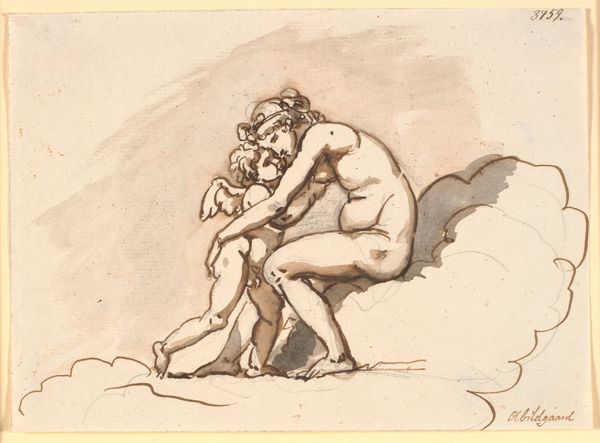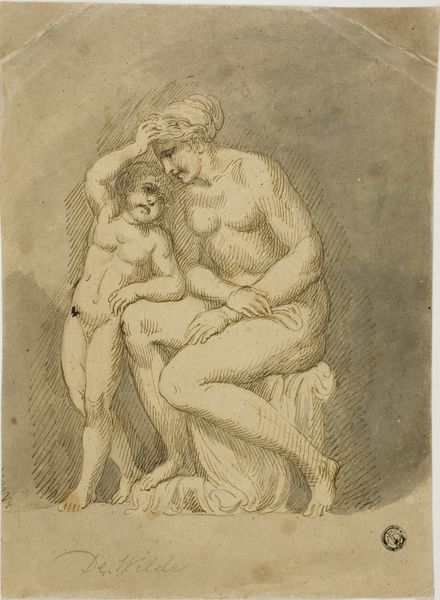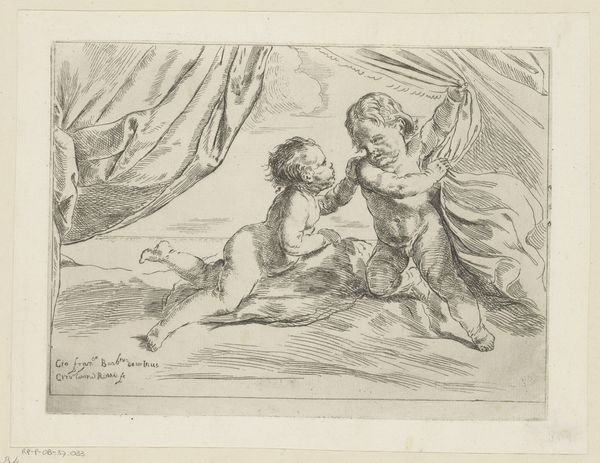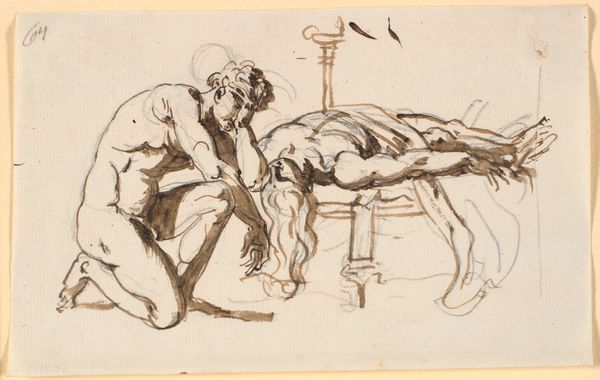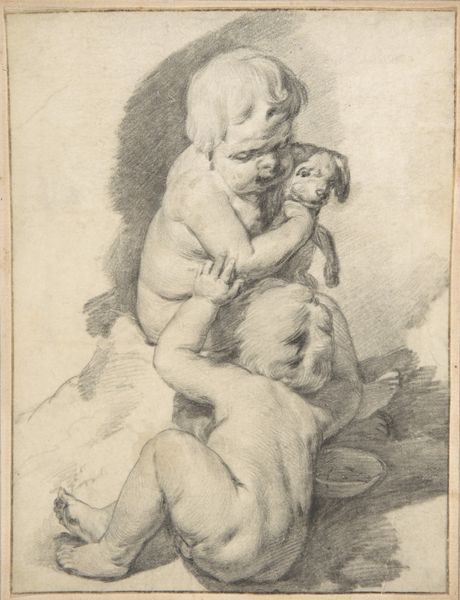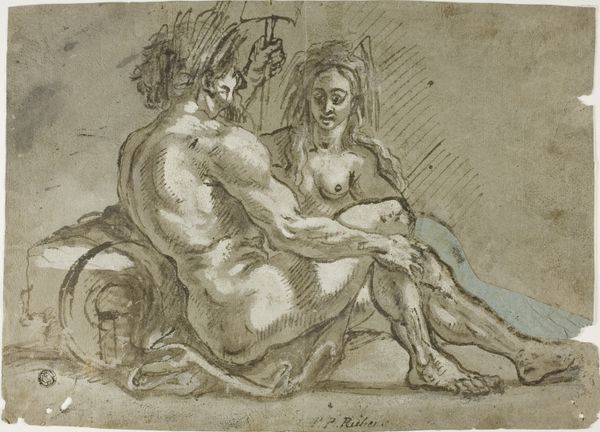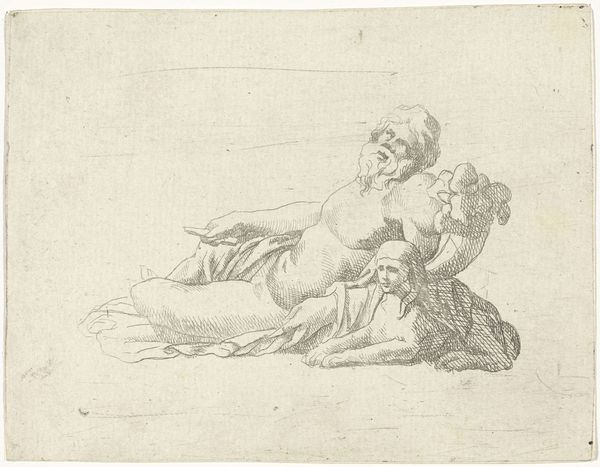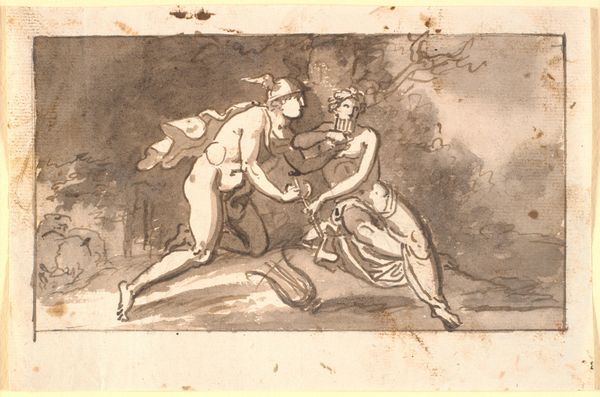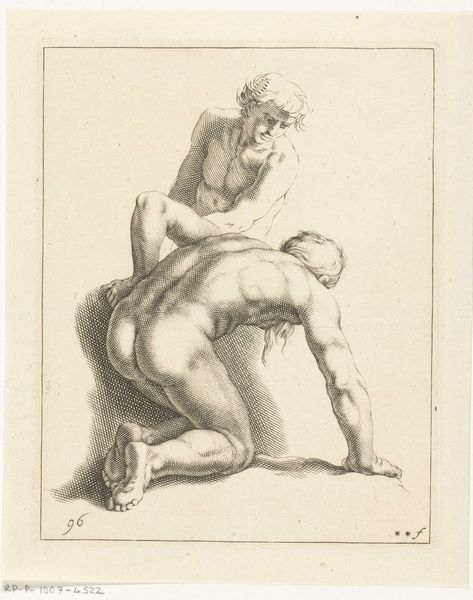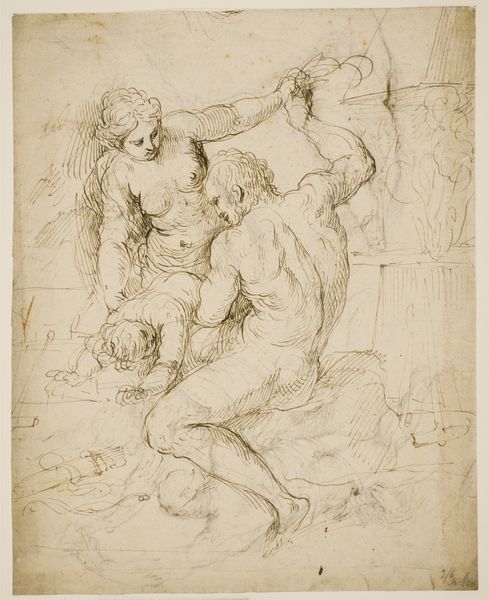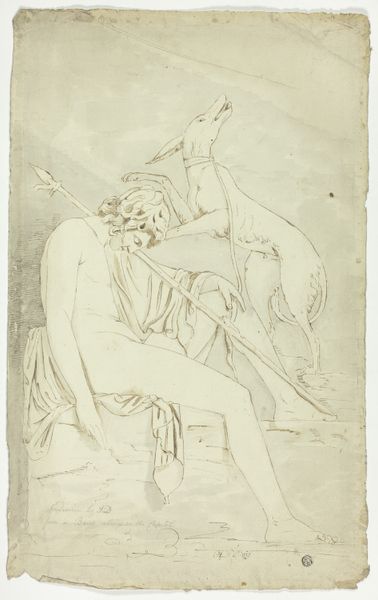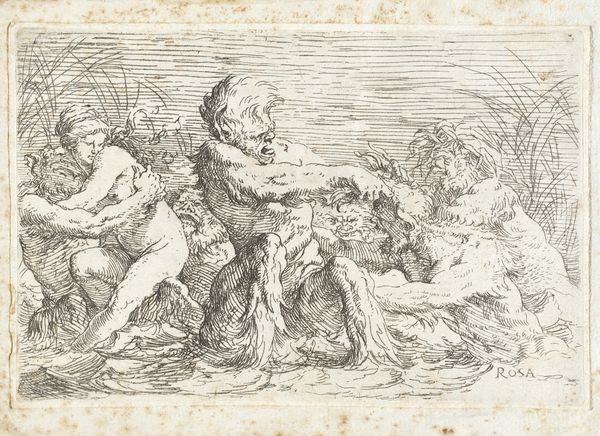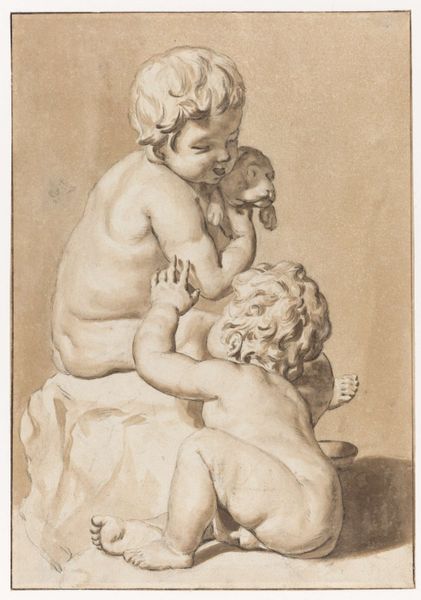
En nøgen knælende moder med sin lille dreng 1743 - 1809
0:00
0:00
Dimensions: 160 mm (height) x 200 mm (width) (bladmaal)
Curator: This is Nicolai Abildgaard’s “En nøgen knælende moder med sin lille dreng,” dating roughly from 1743 to 1809. It’s a drawing, using ink and watercolor, held in the collection of the SMK - Statens Museum for Kunst. Editor: The composition is striking—a mother and child, both nude, intertwined in an intimate embrace. The sketchy lines convey a sense of immediacy, almost as if capturing a fleeting moment. There's a tenderness despite the lack of fine detail. Curator: Indeed. Considering Abildgaard’s historical context, let's examine his materials and their role. The use of ink and watercolor, readily available and relatively inexpensive, suggests this work might have been conceived as a study rather than a finished piece for formal commission. This connects to a broader Romantic interest in capturing raw emotion and primal connections. Editor: Focusing on formal elements, observe how the artist employs contour lines to define the figures, especially the mother’s muscular physique, which is contrasted with the soft curves of the child. The subtle washes of color add volume and depth, directing our gaze towards their embrace—a very classical arrangement. Curator: The sketch's medium underscores the labor. It is visible, evident that the artist is workshopping how the mother and child physically fit together. This speaks to Abildgaard's role in shaping Danish national identity through accessible depictions of universal familial bonds, making art relevant beyond courtly circles. Editor: I see it more in terms of formal tensions: the dynamism of the pose against the static quality of the ground. The contrasting line weights create a compelling interplay of light and shadow, which accentuates their forms. Notice the subtle psychological tension, the inward focus suggested by their downcast glances, indicative of burgeoning Romantic sentiments. Curator: That's where labor comes in; that emotionality is something worked and developed, something crafted, not merely an inspiration. Abildgaard and others labored to connect art and identity. The increasing commodification of art fostered new markets where sketches carried both artistic merit and symbolic cultural weight. Editor: A valuable insight into the context of its creation. By considering both formal devices and art's sociopolitical environment, we gain a more layered appreciation. Curator: I concur. By recognizing art's production methods and its availability, we contextualize the artwork and comprehend the material circumstances that propelled his creativity.
Comments
No comments
Be the first to comment and join the conversation on the ultimate creative platform.
